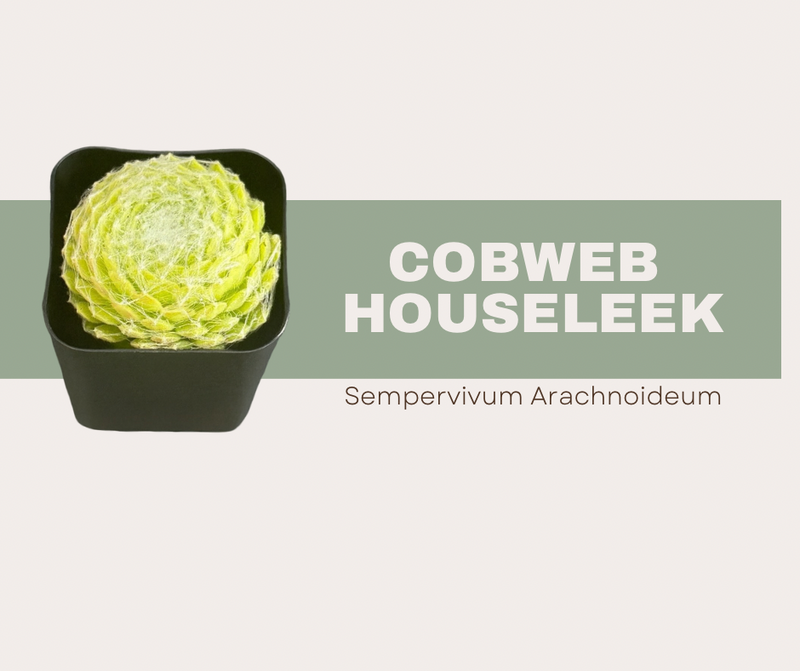Sempervivum arachnoideum (Cobweb Houseleek)🕸

Sempervivum arachnoideum, often called the “Cobweb Houseleek,” is a rosette succulent known for its web like threads that cover the tops of its leaves. The effect looks like delicate spider silk woven across the plant, making it one of the most unique and conversation worthy succulents you can grow.
What Makes it Special?
This succulent doesn’t just look magical, it adapts to tough conditions. The cobweb isn’t actual spider webbing but fine, natural hairs that help protect the plant from harsh sun and conserve moisture. With its rosettes and white “cobwebs,” it gives instant character to any succulent collection.
How to Care for It
Light
Sempervivums love full sun (hardened off prior). Outdoors, they thrive in direct light, but indoors they need the brightest window you can give them. Lack of sunlight can cause stretching and weaken the cobweb effect.
Water
Water sparingly. These plants are drought tolerant and only need a deep soak when the soil is completely dry. Overwatering is the fastest way to lose them, so less is more.
Soil
A gritty, fast draining succulent or cactus soil mix is best. Adding extra pumice, sand, or perlite will help keep roots dry and healthy.
Temperature
Cobweb houseleeks are frost hardy compared to most succulents. They can tolerate freezing conditions down to about –20°F when planted in the ground. In pots, protect them from freezes by moving them to a sheltered spot.
Fertilizer
A light feeding of diluted succulent fertilizer once in spring is plenty. Too much fertilizer can disrupt their compact rosette form.
Blooming
Like other sempervivums, they’re monocarpic each rosette blooms once, then dies. Don’t panic though; they produce plenty of offsets (“chicks”) before blooming, so the colony keeps growing. Blooms are star shaped, usually pink or reddish, and quite beautiful against the cobwebbed rosettes.
Pet Safe?
Yes, sempervivums are non toxic to cats, dogs. Safe to grow in any pet friendly home.
Humidity
They prefer low humidity and dry air. High humidity can encourage rot, especially with poor soil drainage.
Propagation
Propagation is easy. Just detach the offsets (“chicks”) from the main rosette and plant them in well draining soil. They’ll root quickly and form new webs of their own.
Why We Picked This Plant
We chose the Cobweb Houseleek for October because it couldn’t be more fitting for spooky season. With its natural webbing across the rosettes, it looks like a tiny cobweb house decoration, except it’s alive. While other succulents shine with flowers or color, this one brings drama. It’s eerie, unusual, and festive, making it the perfect plant to celebrate the month of cobwebs, costumes, and pumpkin everything!
If this Cobweb Houseleek showed up in your Succly box, congratulations, you’ve just unwrapped one of the most unique succulents out there.
Snap a pic, tag @UnboxmySuccly, and show us where your cobweb houseleek lives. Bonus points if it’s next to other spooky seasonal decor!

Leave a Comment